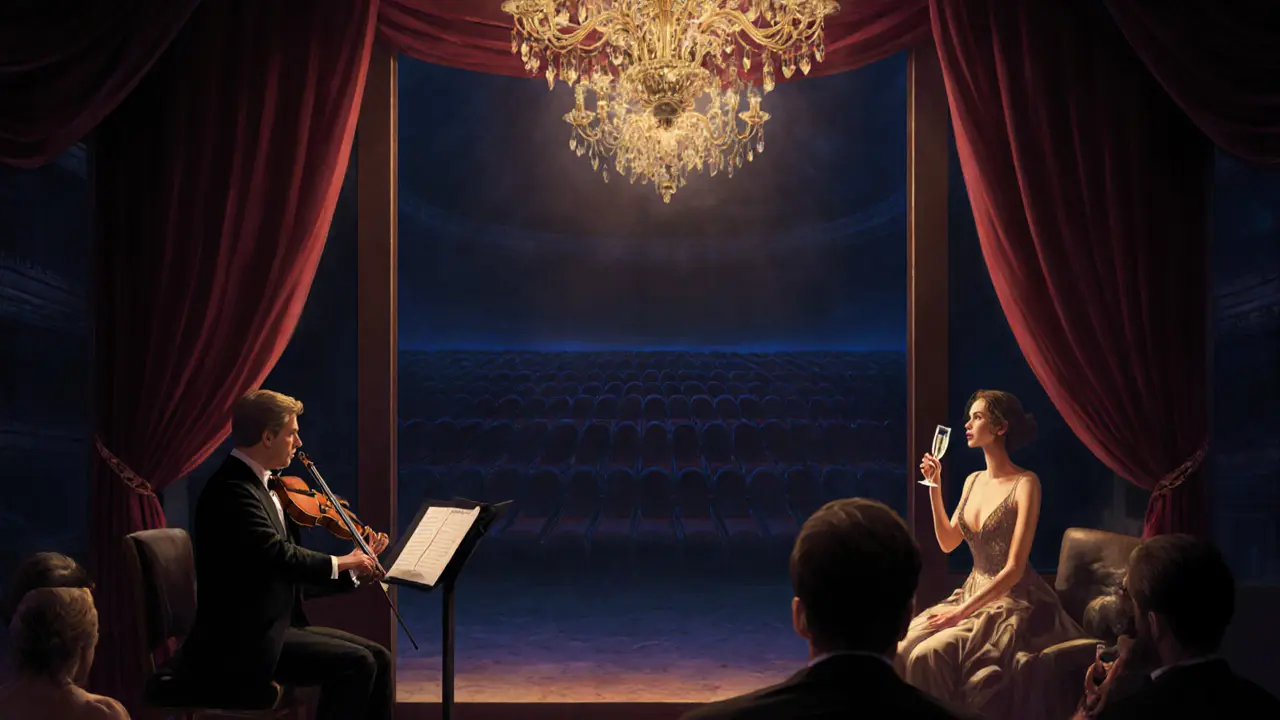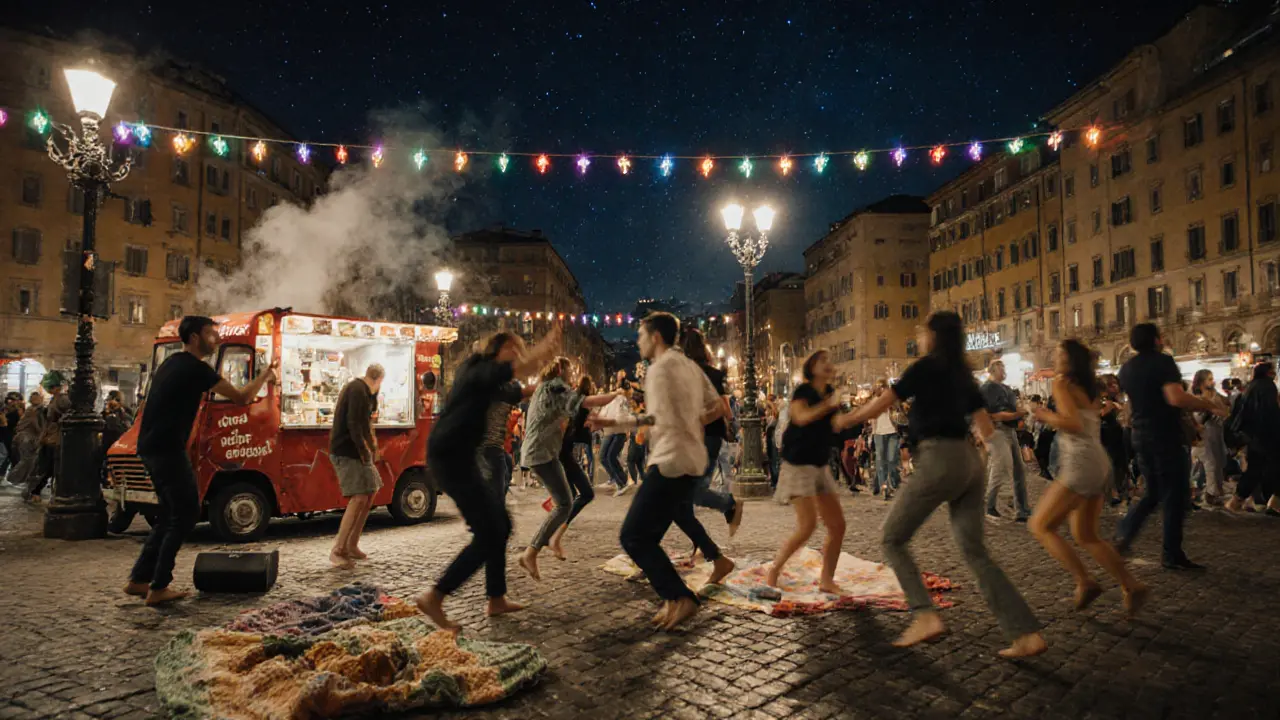Unforgettable Nights in Milan: Top 10 Nightlife Hotspots You Can't Miss

Millions visit Milan for fashion, food, and art-but the real magic happens after dark. While daytime sees tourists snapping photos of the Duomo, locals and savvy visitors slip into hidden courtyards, rooftop lounges, and underground jazz dens where the city truly comes alive. If you think Milan’s nightlife is just about fancy cocktail bars and clubbing, you’re missing half the story. The real charm? It’s layered, unpredictable, and deeply local.
1. Bracco 42
Open since 2019, Bracco 42 isn’t just a bar-it’s a movement. Tucked into a converted 19th-century warehouse in the Navigli district, this place blends industrial grit with velvet sofas and curated vinyl. The bartenders don’t just mix drinks; they tell stories. Order the Milanese Negroni-gin, Campari, sweet vermouth, and a splash of local orange liqueur-and watch the amber light catch the ice as it melts. No one rushes you here. This is where Milanese professionals unwind after work, not tourists hunting for Instagram backdrops.
2. The Lamp Room
Walk past the unmarked door near Piazza Cordusio and you’ll find yourself in a 1920s-inspired speakeasy lit entirely by vintage lamps. The owner, a former lighting designer, collected over 80 lamps from flea markets across Europe. Each one casts a different glow-soft amber, cool blue, warm rose. The cocktail menu changes monthly, but the Velvet Shadow (mezcal, blackberry shrub, smoked salt, and a drop of absinthe) is a permanent favorite. You need a reservation. Walk-ins? Rarely allowed. That’s part of the draw.
3. La Scala’s After Hours
Yes, you read that right. After the opera ends at Teatro alla Scala, the staff open a secret lounge behind the stage. It’s not a tourist gimmick-it’s real. Only those with a ticket to that night’s performance get access. Inside, you’ll find musicians from the orchestra, opera singers, and a few lucky outsiders sipping Prosecco from crystal flutes. The atmosphere? Quiet, intimate, electric. You might hear a soprano hum a tune or a cellist improvise a melody. No one talks loudly. No one takes photos. It’s a moment you can’t book, only earn.
4. Piazza XXV Aprile
This square isn’t on most guidebooks, but by 11 p.m., it turns into Milan’s most spontaneous street party. Local students, artists, and expats bring blankets, cheap wine, and speakers. There’s no DJ, no bouncer, no cover charge. Just a rotating playlist of Italian indie rock, Afrobeat, and 90s hip-hop. Food trucks serve arancini and panzerotti until 2 a.m. It’s messy, loud, and utterly authentic. Don’t expect luxury. Do expect to dance with strangers who become friends by sunrise.

5. Jazz Club Milano
Since 1983, this basement club near Porta Venezia has hosted legends like Chet Baker and modern icons like Stefano Bollani. The acoustics are perfect-wood paneling, low ceilings, no echo. You won’t find neon signs or bottle service here. Just dim lights, leather booths, and the kind of silence that makes every saxophone note feel like a confession. Cover is €15, but it’s worth it. Arrive before 10 p.m. if you want a seat. After that, it’s standing room only-and worth every cramped inch.
6. Rooftop 360
Perched atop the Four Seasons Hotel, this terrace offers one of the best views of the Duomo at night. But here’s the twist: it’s not just for hotel guests. Book a table for cocktails, and you’ll get the same skyline as the VIPs. The Milan Sunset (Aperol, prosecco, blood orange, and a pinch of cardamom) is the signature. What sets this place apart? The silence. No booming bass, no shouting. Just the distant chime of church bells and the murmur of conversation. It’s the kind of place where you realize you’ve been waiting your whole life for a quiet moment in a noisy city.
7. Cova Bar
Founded in 1817, Cova is Milan’s oldest café-but after midnight, it transforms. The marble counters become cocktail stations. The chandeliers dim. The waitstaff swap aprons for black vests. The Espresso Martini here isn’t just a drink-it’s an experience. Made with single-origin Arabica beans steeped for 12 hours, then chilled and shaken with vodka and a touch of vanilla bean. It’s served in a chilled coupe glass with a dusting of cocoa. You’ll taste history in every sip.

8. Bagutta 18
This narrow alley off Via Bagutta is lined with art studios, but one door leads to a hidden wine bar that only opens on weekends. The owner, a retired sommelier, keeps 200 bottles from small Italian vineyards you’ve never heard of. He’ll pour you a taste of a 2018 Nebbiolo from Lombardy’s hills-unfiltered, unaged, and unforgettable. No menu. No prices listed. Just ask, “What’s surprising tonight?” and let him decide. You’ll leave with a new favorite grape and a story you won’t forget.
9. Club 21
Forget the big-name clubs. Club 21 is where Milan’s underground electronic scene thrives. Located in a former textile factory in the Lambrate district, it’s unmarked, unpolished, and unapologetic. The sound system? Custom-built by a local engineer. The lighting? Strobe-free, using only colored LEDs synced to the rhythm. No VIP sections. No bottle service. Just people dancing like no one’s watching. The DJ set starts at 1 a.m. and doesn’t end until the sun rises. Dress code? Comfortable shoes. Attitude? Open-minded.
10. Bar Basso
Here’s the truth: you can’t talk about Milan nightlife without mentioning Bar Basso. This tiny bar in the Porta Nuova district is where the Negroni was invented in 1919. The recipe hasn’t changed. The barkeep still pours it the same way-equal parts gin, Campari, and sweet vermouth, stirred with ice, served with an orange twist. It’s not fancy. It’s not loud. But it’s the heartbeat of Milan’s drinking culture. Show up at 9 p.m. and you’ll find a mix of grandmothers, designers, and tourists-all waiting for their turn at the counter. Don’t rush. This isn’t a drink. It’s a ritual.
Milan’s nightlife isn’t about flashing lights or VIP lists. It’s about moments-quiet, unexpected, and deeply human. Whether you’re sipping a Negroni in a 100-year-old bar or dancing barefoot on a square under the stars, the city rewards those who slow down. The best nights here don’t start with a reservation. They start with curiosity.
What’s the best time to start a night out in Milan?
Most locals don’t start their nights until after 10 p.m. Dinner typically runs from 8 to 10, and bars don’t get lively until after 11. Clubs don’t fill up until after midnight. If you show up at 8 p.m. looking for a party, you’ll be the only one there. Plan for late nights.
Is Milan nightlife safe for tourists?
Yes, but with awareness. Areas like Navigli, Brera, and Porta Nuova are well-lit and busy at night. Avoid poorly lit alleys near Centrale Station after midnight. Pickpocketing is rare but possible in crowded spots like Piazza XXV Aprile. Stick to well-known bars and trust your gut. Most locals are friendly and happy to help if you’re lost.
Do I need to book ahead for Milan’s top bars?
For places like The Lamp Room, La Scala’s After Hours, and Bagutta 18, yes-book at least 48 hours ahead. For Bracco 42, Jazz Club Milano, and Bar Basso, walk-ins are fine but expect to wait during peak hours. Rooftop 360 requires a reservation for tables, but you can walk in for bar seating. Always check websites or call ahead if you’re unsure.
What’s the dress code for Milan nightlife?
Milan is stylish, but not rigid. For rooftop bars and upscale lounges, smart casual works-think dark jeans, a nice shirt, and closed shoes. For underground clubs like Club 21 or street parties, wear what’s comfortable. Avoid flip-flops and sportswear in most bars. You don’t need designer labels, but effort matters. Locals notice.
Can I find English-speaking staff in Milan’s bars?
In tourist-heavy areas like Navigli and Brera, yes. Many bartenders speak English. But in hidden spots like Bagutta 18 or La Scala’s After Hours, staff might speak only Italian. That’s part of the charm. Learn a few phrases-"Un bicchiere di vino, per favore"-and you’ll be welcomed warmly. Most locals appreciate the effort.
Are there any free nightlife options in Milan?
Absolutely. Piazza XXV Aprile is free and open to everyone. Many churches host free classical music concerts on Friday nights during the season. The Navigli canals are beautiful to walk along after dark, and you’ll often find street musicians playing. You don’t need to spend money to enjoy Milan’s night culture-just show up with an open mind.
If you’re looking for more than just a drink or a dance, Milan’s nightlife offers something deeper: connection. Whether it’s a shared silence at Bar Basso, a spontaneous jam session on a square, or a glass of wine with someone who became a friend in five minutes-you’ll leave with more than memories. You’ll leave with stories that stick with you long after the last note fades.